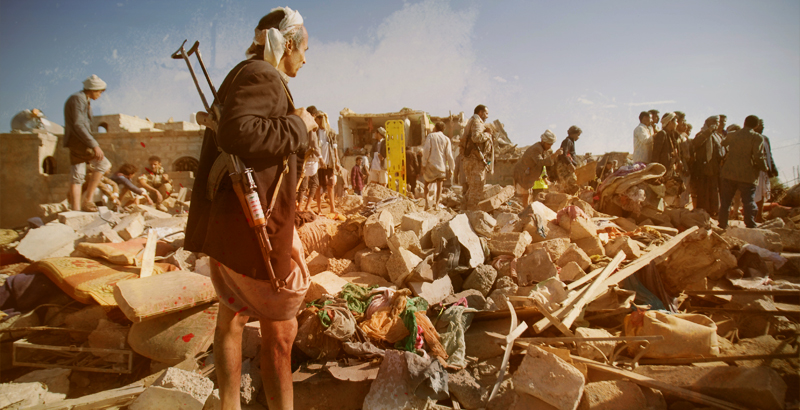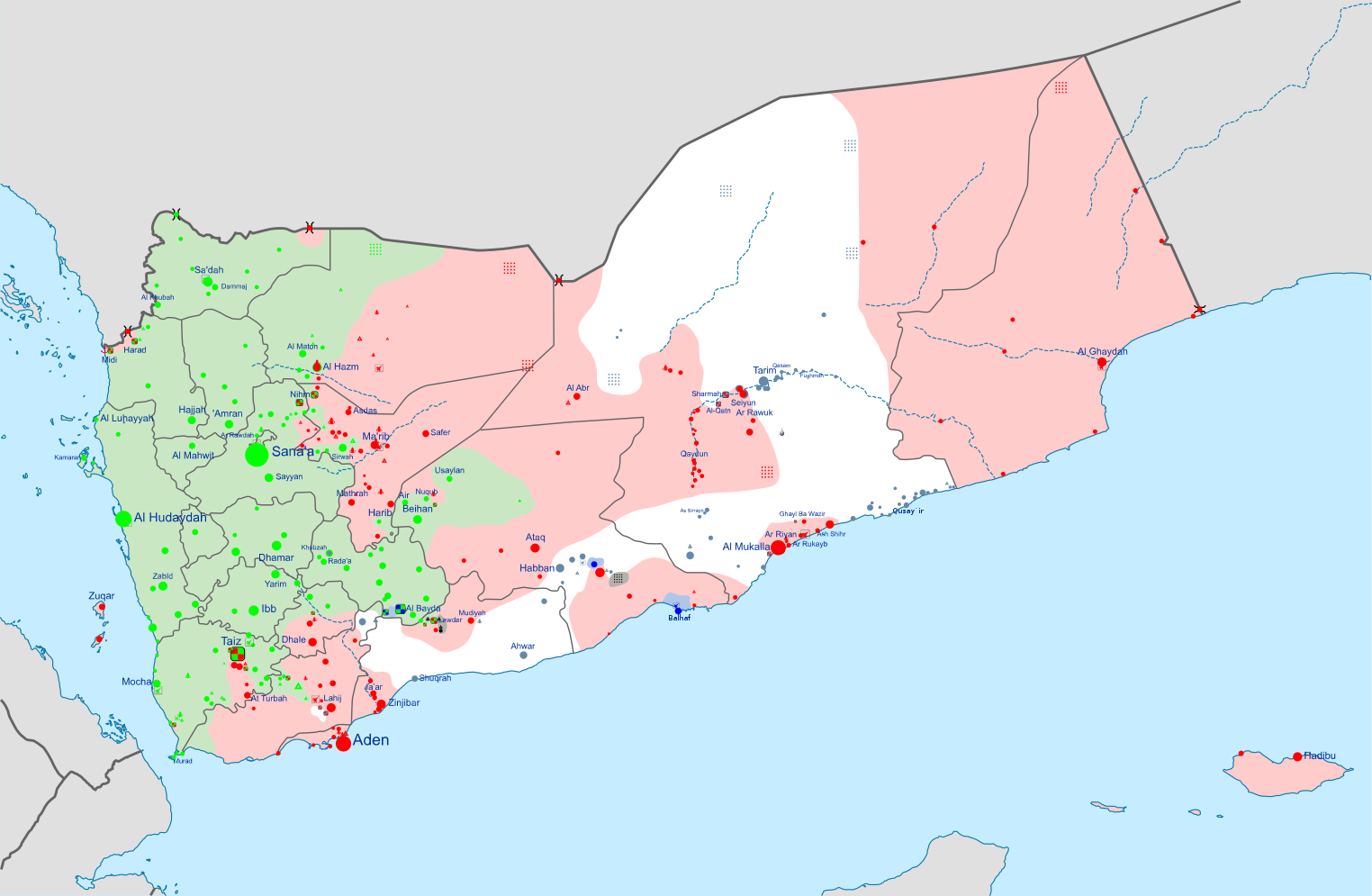
The war in Yemen keeps gaining pace. The humanitarian situation looks like a catastrophe. According to the UN reports, around 4 thousand civilians fell victims to Saudi airstrikes. At the same time, Mohammed Shamsuddin, the head of Yemen Association of ulama, claims that 227 thousand people have been wounded and killed during the warfare. Each tenth Yemen resident (of 2.8 million people living in the country) became a refugee. 80 percent of the population suffers from starvation and the absence of any medical care. According to the UN estimates, at least 10 thousand children below 5 years old have died because of country lacks medicine.
The reason of the disaster is the blockade of the regions controlled by Houthi rebels. In June 2106 the Saudi Arabian-led coalition was finally included into the UN “blacklist” of countries and groups accused of violating children’s rights. United Nations charged the coalition of murdering 510 and injuring 667 Yemen children. However, just a week later, all mentions of the Saudi military and their allies were completely removed from the list. Ban Ki-moon, the current Secretary-General of the United Nations, admitted that the removal was squeezed by Saudi Arabia under the threat of freezing their sponsorship of some UN programs.
Meanwhile, despite the numerous high-profile scandals, the military and technical cooperating between Riyadh and the West is gradually extending. Thus, on August 10, 2016 the Pentagon sold 153 “Abrams” tanks and munitions at the cost of 1.15 million USD to the Saudi Arabian military. And before that, the US Congress overrode the presidential veto of cluster munitions despite the fact that the UN had proved that this type of arms had been widely used against Yemen civilians. In whole, Saudi Arabia spent 87.2 billion dollars on military needs during the last year.
In April 2016 there was a hope that the war would be turned in a kind of “frozen” conflict after the ceasefire and negotiations took place. But the UN position turned out to be a confusing shock not only for the leaders of Yemen resistance but also for the majority of international analysts. The special representative of the UN Secretary-General submitted a roadmap of the conflict resolution which more looked like a capitulation demand. The Houthis were offered to surrender their weapons and leave the largest Yemen cities – Sana’a, Taiz and Hodeidah – during a 45-day period after signing the peace agreement. The political process of forming a new government of the national unity should have been launched only after the abovementioned steps. The Houthi rejected the plan since they also wanted to take part in the new government which never meant to happen.

Military situation in Yemen, August 2016
On August 6, 2016 Saudi-controlled Hadi’s government cancelled the negotiations. The next day the coalition made more than 30 airstrikes at Yemen. Almost all of the targets turned out to be civilian objects. Twenty people, mostly females, died during the airstrike at the potato chips factory in Sana’a. The bombing of a market in a small town of Nihm brought another twenty civilian casualties. But the most terrible crimes happened in the Saada Governorate. On August 13, 2016 Saudi bombers destroyed a rural school there. The local media reported of 50 dead. Two days later a hospital shared the same fate, 11 dead, 19 injured.
In these circumstances, Mansur Hadi’s government is naturally seen as a mere stooge controlled by the invaders. Thus, various forces are gathering around the Houthis. August 14, 2016 was the inauguration day of the Supreme Political Council of Yemen (SPC), a new government of the country which derived from the old Revolutionary Committee. Beside the Houthis, it includes the representatives of the General People’s Congress (the major Yemen political party which supports the ex-president Saleh) and the socialists from the National Democratic Front. SPC was recognized by the Yemen Parliament which held a session in Sana’a for the first time after 1.5 years. Former Houthis’s opponents – Sunni party “Al-Islah” and the Socialist party of Yemen – also took place in the session. The session resulted in the agreement which stated that the declared goal of the SPC was to unite against the Saudi aggression.
Meanwhile, Hadi’s government can rely only on Saudi soldiers and radical islamists. “Islamic State” and “Al-Qaeda” militants are fighting against the Houthis. Last year, supported by Saudi Arabia the radical Muslims even were inspired to declare the region of Hadhramaut to be an Islamic emirate and started smuggling oil via the ports of Al Mukalla and Ash Shihr. Last year, supported by Saudi Arabia the radical Muslims declared the region of Hadhramaut to be an Islamic emirate and started smuggling oil via the ports of Al Mukalla and Ash Shihr. Last spring, when the cooperation between the coalition and the radicals became obvious, the Saudi government quickly announced that the emirate was eliminated by them. In fact, the islamists left the ports peacefully by prior arrangement. After that they became a “legal” political force known as the “Sons of Hadhramaut” and continued their war on the Houthis. It was the “Sons” who blew the ancient Sufi mosque in a settlement of Es-Sarari, Taiz Governorate, and then abducted and cruelly murdered several dozens of civilians.
In the meantime, after the warfare recommencing, the Houthis and their allies have claimed several important victories. In the Marib Governorate they took the city of Sirrwah from the coalition and got close to the regional capital. They also invested Al Hazm, the capital of Al Jawf Governorate in the north of the country. The Houthis completely liberated the Red Sea coast and the coast of strategically vital Mandeb Strait. The warfare has been pushed to the Saudian territory. The Houthi military groups advanced in the Najran district for 15 kilometers (more than 9 miles) and actually surrounded the regional capital. The battles are taking place in the outskirts of a heavily populated city. The fact that the Yemen-Saudian border regions – Najran, Asir and Jizan – are inhabited by mostly the Shiah and are historically tied to Yemen makes the situation for the Saudian government even more dangerous(they were annexed by SA in 1934). The authorities have to move the local residents fearing a rebellion in the rear. Thus, August 2016 brought plenty of surprises to the Saudi Arabian-led coalition and the West and September may become a turning point in the current situation the the Arabian Peninsula.





